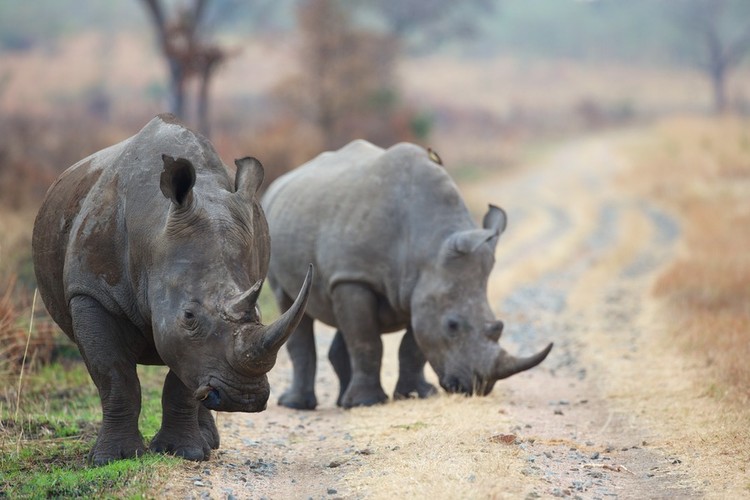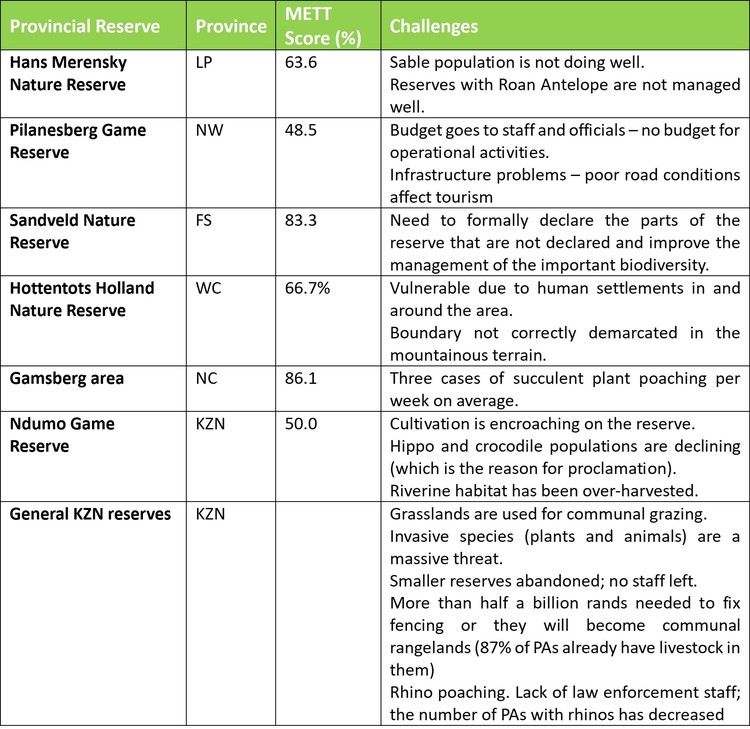Report raises alarm over state of provincial nature reserves
Protected areas critical to the country’s biodiversity and conservation efforts are being badly mismanaged, says the Endangered Wildlife Trust
In one park in KwaZulu-Natal, 275 rhinos were poached in the first half of 2022. Photo: Michael Lorentz
For a long time there has been grave concern among conservationists over declining standards in South Africa’s provincial nature reserves. Now a recent report by the Endangered Wildlife Trust (EWT) says many provincial reserves are in a shocking state, compromising the long-term survival of wildlife and ecosystems. If biodiversity is to be conserved, it will require urgent management interventions.
The newly approved White Paper on Conservation and Sustainable Use of South Africa’s Biodiversity has as its goal “an inclusive, transformed society living in harmony with nature, where biodiversity conservation and sustainable use ensure healthy ecosystems, with improved benefits that are fairly and equitably shared for present and future generations”.
But it is inconceivable how such goals can be accomplished given the current state of collapse in many provincial reserves.
Protected land accounts for 112,807km2 of South Africa’s mainland. Provincial reserves account for 44.5% of this, and the EWT says they are not fulfilling their conservation objectives.
The report found cases where 80−90% of park funding was allocated to salaries, leading to a lack of spending on essential maintenance. There has also been a significant loss of institutional knowledge since an assessment was done in 2010. Experienced staff have left only to be replaced by less capable appointees or not replaced at all.
In some provinces, half the unfilled vacancies were in scientific support roles, making it difficult to record data on species declines or to provide science-based solutions to managers.
A sample of provincial reserves showing their Management Effectiveness Tracking Tool (METT) score which is based on a survey devised by the WWF to assess how effectively wild areas are being managed. It consists of a series of questions given to the managers of protected land. Each answer is given a score so that the results can be compared over time to see if management standards are improving or declining.
At Songimvelo Nature Reserve in Mpumalanga, home to 28 animals of conservation concern, the researchers found part of the reserve abandoned, its rhino population being poached, vehicles no longer operational, and cattle invading the land because fences have not been maintained.
Rhino, hippo and crocodile populations were found to be declining in many reserves due to poaching. Ntsikeni Vlei Nature Reserve (a Ramsar site) in KZN was found to be losing three to four wildebeest a week to poachers.
Fencing neglect is often the first visible sign that management is failing. There are many reports of domestic livestock entering reserves and people living nearby have even planted crops in some reserves.
Problems also arise when animals are able to easily leave protected areas. Where predators such as lion and hyena interact with local communities they are often killed by angry residents before reserve management can react.
In some locations, a vicious circle has arisen where the poorly-maintained tourism infrastructure has caused visitor numbers to decline, resulting in the closure of a potential revenue stream that could have been used to maintain both the tourism facilities and park boundary fences.
The EWT report identified KwaZulu-Natal as the province of most concern. Hluhluwe-iMfolozi Park was the protected area in most urgent need of support and attention. The park recently made headlines regarding several incidents directly related to poor management. This includes the poaching of 275 rhino in the first half of 2022, and human-wildlife conflicts resulting from degraded fences.
In 2020, the entire board of the Ezemvelo KZN Wildlife conservation agency was suspended, after the well-documented political appointment of an inexperienced ANC youth league official as director of the underperforming nature conservation agency.
There is concern that provincial reserves will become what the EWT terms “paper parks”, existing as conservation protection areas on paper only.
Although many are under-resourced financially and lack adequate capacity, they retain the potential to play a meaningful role in the conservation of valuable habitats.
Although it often presents a disturbing picture, the EWT report does highlight the opportunities and practical actions – from recruiting experienced staff to innovative funding models – that could still turn the provincial reserves around. Under-resourced reserves could establish strategic partnerships and outsource critical services to bodies with a proven conservation track record – NGOs, the private sector or research institutions.
Conservationists are looking to the Department of Forestry, Fisheries and the Environment for leadership in the financing and upskilling of reserve management to ensure that the department’s own stated aims can be delivered.
The EWT report concludes: “There is a strong need for provincial reserves to be managed by entities with a conservation or ecological mandate, with appropriate expertise in this area, and with the support of financial and infrastructure experts, and not the other way around”.
Unless this type of management is established, South Africa’s protected areas will fail to meet their conservation mandates. If that happens, the Biodiversity White Paper will be dead.
Views expressed are not necessarily those of GroundUp.
Support independent journalism
Donate using Payfast

Don't miss out on the latest news
We respect your privacy, and promise we won't spam you.
Next: Nelson Mandela Bay mayor suspects cable theft as “an act of sabotage”
Previous: March in Khayelitsha to mark 10 years of Khumbulani Pride
Letters
Dear Editor
I just got back from a five-day stay at a provincial nature reserve [name redacted] with some friends. Our foreign guests were shocked at the state of the accommodation at both chalets, which used to be upmarket, but are now dilapidated. Broken fittings, furniture and appliances, as well as leaking taps and toilets. The worst, however, is the extent of the mould in the bathrooms.
Add to this the unfriendly staff at the resort; their clear apathy towards customer service; disinterested game rangers; and the whole experience is a disaster.
As Paul’s article argues, if they do not get on top of their maintenance and management, tourists will not return nor recommend the place. That is definitely true in our case. Management is underestimating the damage of word-of-mouth reviews.
© 2023 GroundUp. This article is licensed under a Creative Commons Attribution-NoDerivatives 4.0 International License.
You may republish this article, so long as you credit the authors and GroundUp, and do not change the text. Please include a link back to the original article.
We put an invisible pixel in the article so that we can count traffic to republishers. All analytics tools are solely on our servers. We do not give our logs to any third party. Logs are deleted after two weeks. We do not use any IP address identifying information except to count regional traffic. We are solely interested in counting hits, not tracking users. If you republish, please do not delete the invisible pixel.


